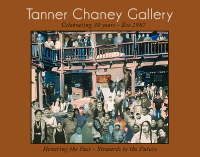Thomas Curtis, Sr.
NAVAJO SILVERSMITH
When Thomas Curtis, Sr. was born on the Navajo reservation, his grandmother told him, "You can make it with your vision, your mind, and your ten fingers. Everything is right here in your hands." Her words were clearly prescient. Thomas became one of the most honored practitioners of the art of silversmithing.
Cutis' work was traditional, a reflection of the way he grew up and the way he lived his life. His grandfathers were both silversmiths. Curtis started working in silver when he was twelve years old. "I work the way I used to see the old smiths do it. I just picture the outline and I start the piece from the center out." His early experience as a blacksmith and sheet metal worker helped him become a better silversmith. Curtis made his own tools, forging the dyes, or stamping tools, he used to create patterns on silver from old broken files. "If I do it right, they last for a long time."
Nature and beauty found in it are important to the tradition of Navajo way of life. Curtis said that he found the inspiration for his own work by "looking at the ground, the sky, the plants, and the four seasons." He also turned to sacred traditions. The ketoh, or bow guard is a ceremonial piece worn on the left wrist that provides protection and good luck. Remembering an old silver box that belonged to his grandfather, Curtis adapted the ketoh design for the lids of the sterling silver boxes for which he was renowned.
Just as Curtis learned his craft by watching his grandfather, he shared his skill with his own children and grandchildren. His daughter Jennifer Redhorse, created contemporary silver jewelry and showed her work side by side with her dad's. "My way, my belief, who I am today is made of four things -- my grandmother, my grandfather, my mother, and my father." Cutis says "When my kids picked up my work, that was real encouraging to me because it means the tradition are going to go on."
Before he became a full-time silversmith, Curtis was also a champion bareback rider and a member of the All-Indian Professional Rodeo Cowboy's Association. He always said that he saw a connection between his rodeo days and his silversmithing. "They have both been my bread and butter, my way of making a living. I was really serious about rodeo riding, and I'm the same way about silversmithing." Cutis said he liked being a competitor, whether it's on horseback or at Indian Market.
He won Best of Show at the first show he entered, Northern Arizona Museum Show in the 1980's. He entered his first Indian Market in 1984, winning first place and division ribbons. In May, 2003, he was featured in Arizona Highways. "I guess I was blessed somehow. I make something and it catches someone's eye and they want to buy it."
Major Awards:
Santa Fe Indian Market, Best of Division, First, Second, and Third Place Awards

